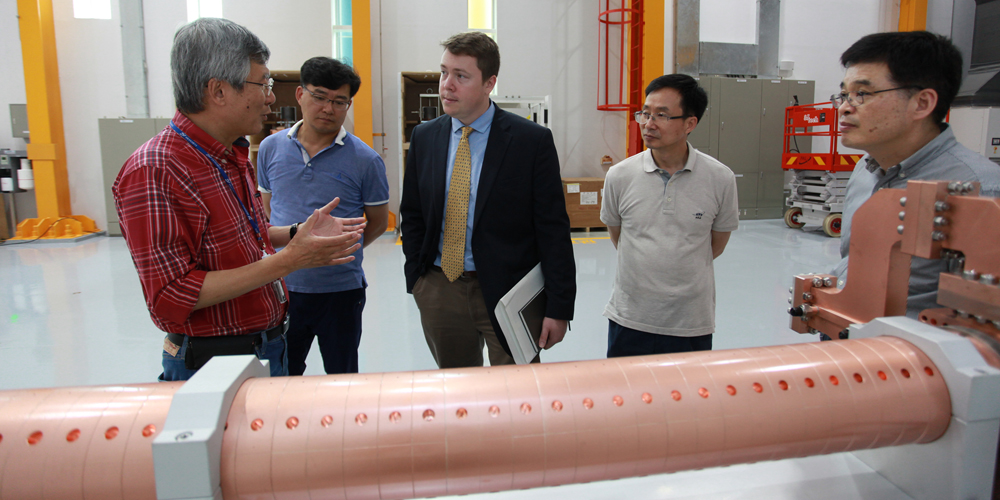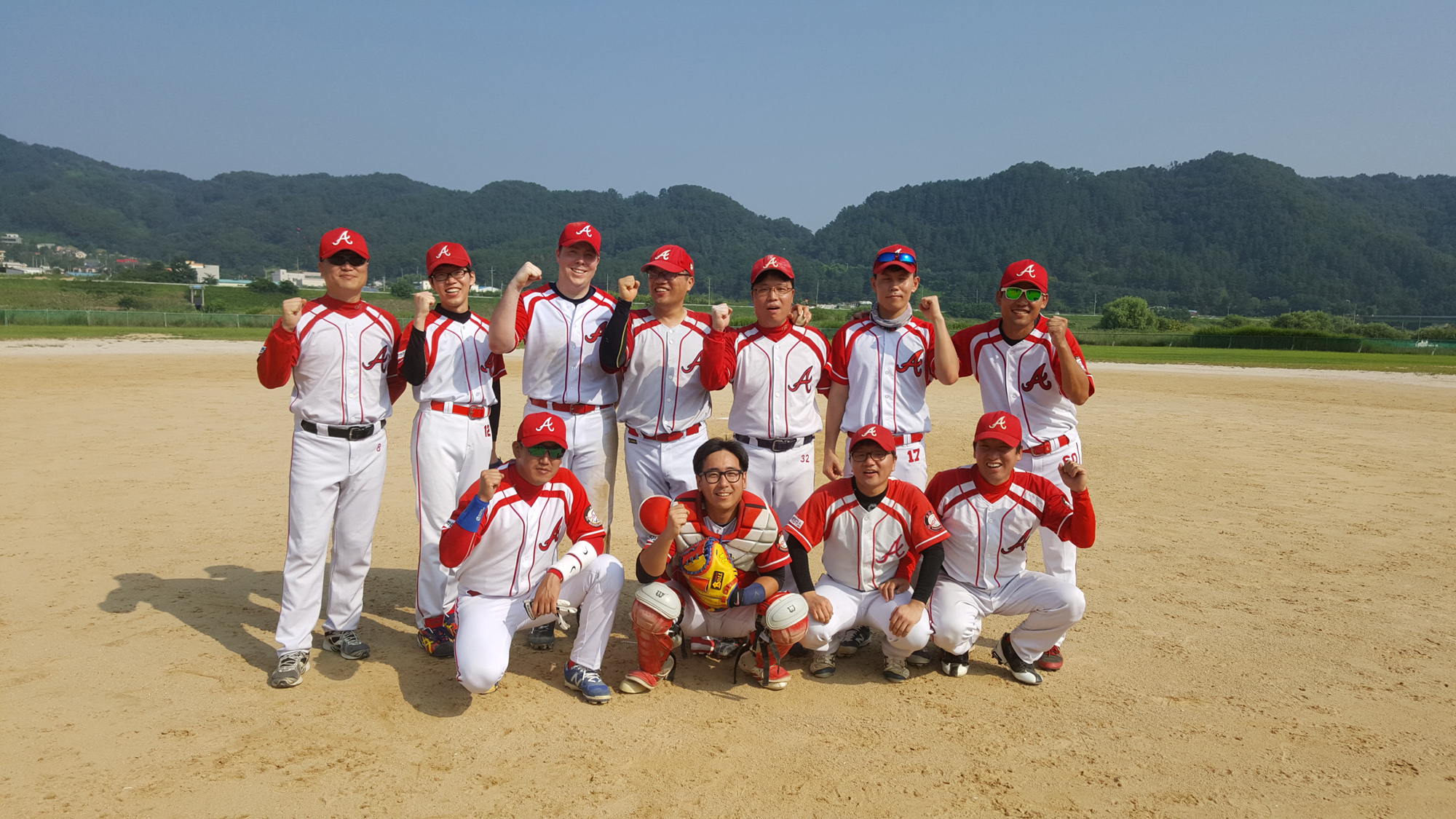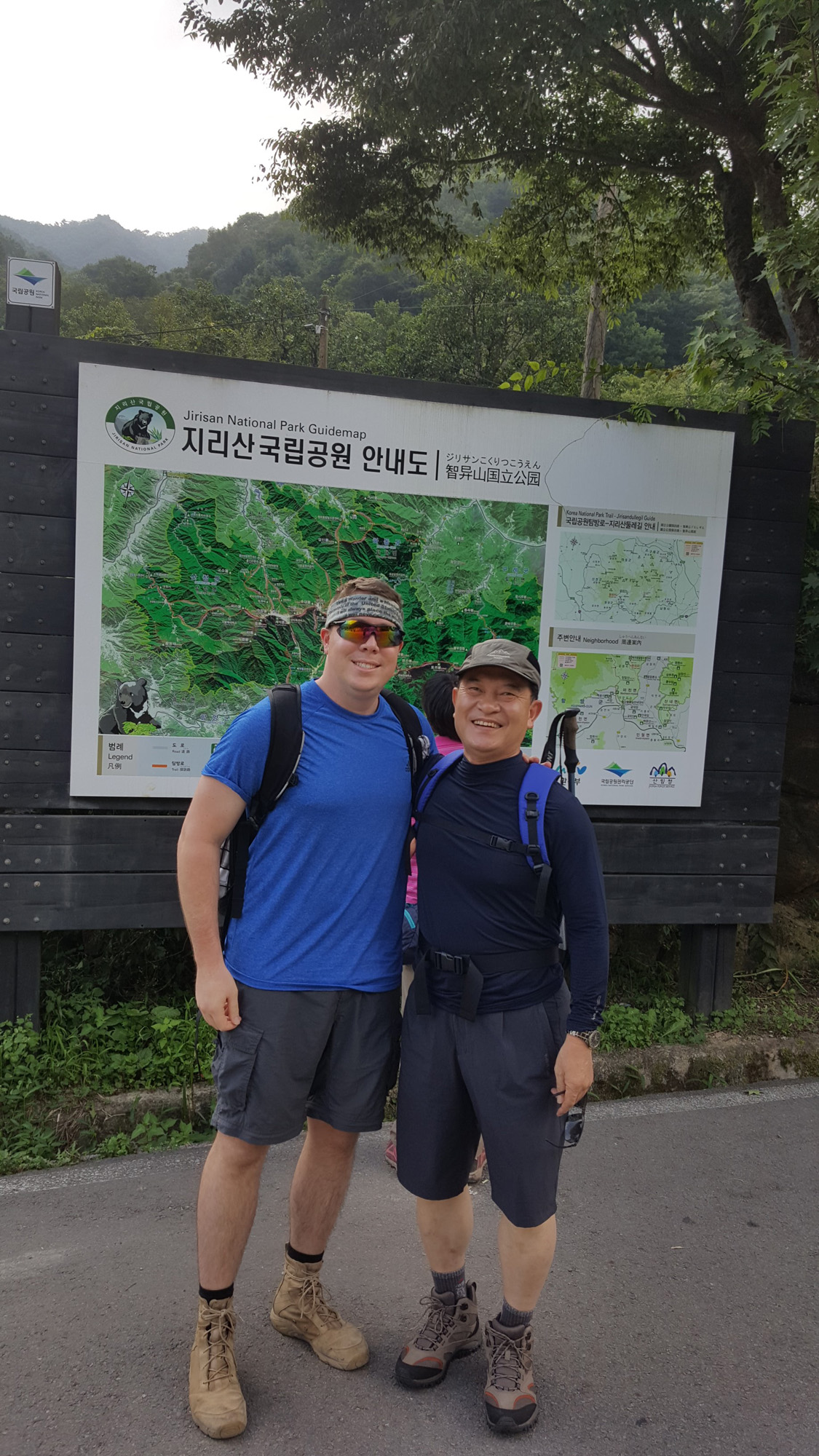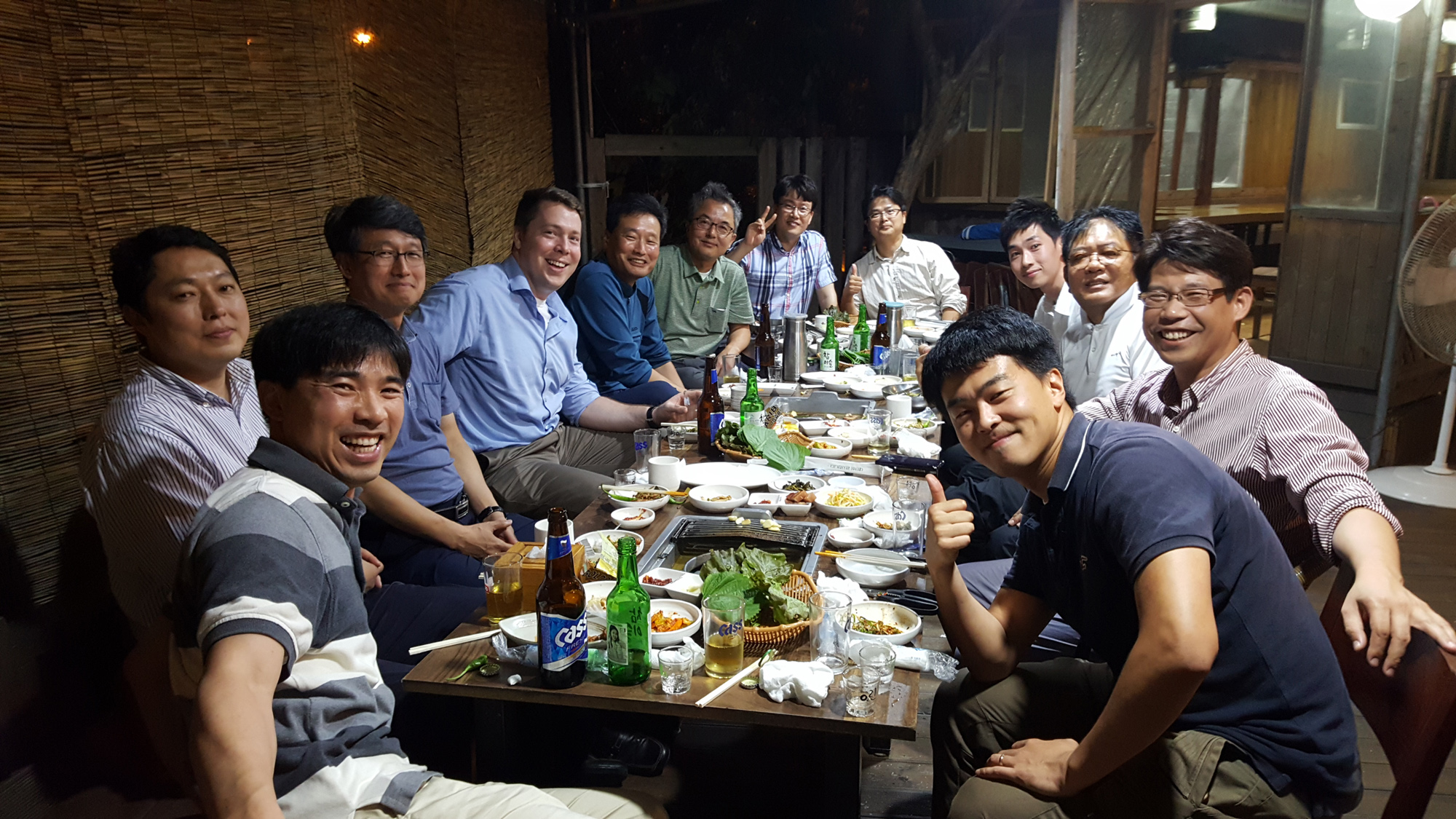
by Joyce M. Conant, ARL Public Affairs
ABERDEEN PROVING GROUND, Md. — Dr. Mark Griep, a materials engineer working in the nano/bionano materials field at the U.S. Army Research Laboratory, recently returned from a one-year tour working at the Agency for Defense Development in Daejeon, Republic of Korea. The assignment was part of the Department of Defense’s Engineer and Scientist Exchange Program or ESEP.
The program promotes international cooperation through the exchange of defense scientists and engineers and affords opportunities for U.S. military and civilian engineer and scientist personnel to work on-site in allied and friendly countries. Currently, DOD has signed ESEP agreements with Australia, Canada, Chile, Egypt, France, Germany, Israel, Italy, Japan, Norway, Poland, Republic of Korea, Singapore, Sweden, Spain, The Netherlands and the United Kingdom.
Daejeon is located in the center of Korea and is the science and technology hub for the nation. In addition to a large university and industry presence, the majority of Korea’s government research and development is performed there.

Dr. Mark Griep, a materials engineer working in the nano and bionano materials field at the U.S. Army Research Laboratory, recently returned from a one-year tour working at the Agency for Defense Development in Daejeon, Republic of Korea. The assignment was part of the Department of Defense’s Engineer and Scientist Exchange Program or ESEP. Griep said he wanted to experience the Korean culture to the fullest and enjoyed playing softball with his colleagues. (Photo Credit: Courtesy photo)
The closest military base was about two hours from Griep’s duty station, making him fully immersed in the Korean life while living in Daejeon. As soon as he arrived he found out that in addition to the job, there were many unforeseen obstacles he had to overcome, such as the Korean rental system, car registration/insurance, mail and the fact his jeep was considered a luxury vehicle.
“There was a lot of ‘figuring things out’ as I went, with plenty of surprises along the way. I had heard of Korea’s traditional ‘jonsei’ system, where house deposits are between $10,000 to $100,000 U.S. dollars and you pay a very small monthly rent, so I tried to save as much as I could beforehand to cover it as the ESEP doesn’t have a system to cover this. I found out when I got there that I was under the 8th Army regulations, so I had to follow their rental rules for housing. These rules work well around Army bases, as the landlords are used to them, but with no Army presence in Daejeon it was quite a battle to find a landlord willing to switch ‘systems’ and rent to my wife and I. We went through a lot of rejections and negotiations to finally lock an apartment down,” Griep explained.
Once getting his personal business in order, it was time for Griep to get acclimated to his new work environment. There, he evaluated the university-based Defense Nanotechnology Applications Center and isolated key nanotechnology developments to transition ADD in support of the Material’s Division mission. The center works with multiple institutions including Yonseii University, Seoul National University and the Korean Advanced Institute of Science and Technology.

Dr. Mark Griep said he wanted to experience the Korean culture to the fullest and enjoyed hiking in the mountains of Dajeon. Shown here is Griep (left) with one of his Korean colleagues. (Photo Credit: Courtesy photo)
Griep said more than 20 nanotechnology research areas are on-going relating to alternative energy, Soldier protection material, biotechnology and stealth materials.
“I isolated battery technology as one of their primary thrust area’s that they are expanding and connected unique nanomaterials were being developed in other programs that could be tailored towards advanced battery concepts,” Griep said. “Specifically, work towards transition metal dichalcogenides at Yonseii University and carbon nanotube functionalized carbon nanofibers at Seoul National University, presented two advanced nanomaterials that, when potentially hybridized, could have unique applicability in lithium ion battery and metal-air battery applications.”
During the assignment, Griep created the material’s infrastructure at the agency to “directly synthesize tailorable TMD/carbon hybrid materials.” Through these efforts over 30 material concepts were produced to encompass material variations including defect engineering, heteroatom doping, TMD composition, exposed catalytic surface orientation and unique carbon substrates. These materials were fully characterized via collaborations built within the agency and at the institute.
“The successful creation of these highly tailorable catalytic materials caught the interest of the power and energy teams, and these materials were integrated into their primary programs, particularly towards lithium-air battery applications,” Griep said.
Typical workdays ran from 9 a.m. to 6:30 p.m., but Griep usually tried to get to the lab early to have coffee with the team and to build camaraderie. He indicated there was a set lunch hour that seemed fairly mandatory. During this hour, aside from a quick lunch, which was usually centered on rice, kimchi and octopus, a lot of activities would start up. There was a baseball field, track, soccer field, archery range, tennis courts, basketball, etc.
Griep said he wanted to experience and learn the Korean culture to the fullest, which he thought played a major role in his integration into the organization.
“ADD is located up in the mountains, so my favorite was always hiking. There were several courses winding through the mountains, some of which lead to an overlook of the entire city of Daejeon. Hiking was year-round — rain or shine. They even said that hiking will help cure a flu/cold, so not many excuses to get out of it,” Griep said. “Learning and following the cultural norms was a key part to becoming a ‘normal’ and trusted member of the team.”
When asked one of the favorite parts of the tour, Griep said, “Without question it would be my colleagues. Although I started on one specific team, I was able to readily expand my network there and by the end was working with multiple teams across two divisions, so I had the opportunity to connect with a diverse range of researchers. This, in addition to joining ADD sports clubs and events, I had the opportunity to meet and interact with hundreds of Korean researchers.”

The most unexpected things usually revolved around food. Shown is Griep along with his colleagues enjoying a traditional Korean meal. (Photo Credit: Courtesy photo)
He said the most unexpected things usually revolved around food. “Whether the food came out and was still moving, being warned ‘not to breathe’ while you eat certain foods, or learning to pace yourself with the endless courses and side dishes, one of the most memorable was my first time trying ‘sannakjie,’ which is live octopus. Never expected having to fight my dinner to let go of the plate,” he said.
Griep also experienced the traditional toasting when employees depart.
“Giving toasts is a normal part of every dinner, but for ‘going away’ dinners it gets a bit more extensive. Each person at the table stands up and gives a toast (usually a funny story or memory of them) one by one, and even if you don’t know them well, you still gotta come up with something,” he said.
Griep said the work he did in Korea connects well to research interests at ARL and other Army labs, and he thinks that as a member of the team there that they were just “scratching the surface” of what these materials can do. He said the Korean agency is placing a major emphasis in this area, so it’s a great opportunity to directly build on-going collaborations.
“The division I was in had several shared interest areas with ARL’s Weapons and Materials Research Directorate in particular. Utilizing my current connections, I’m hoping to arrange a visit to the Agency for Defense Development for key ARL personnel to see first-hand the collaborative opportunities within Korea,” Griep said.

The assignment was part of the Department of Defense’s Engineer and Scientist Exchange Program or ESEP. (Photo Credit: Courtesy photo)
Griep said he is definitely interested in working overseas again in the future. In his nano and bionano fields, the East and Southeast Asian countries have emerged as dominant players. There is a tremendous opportunity for collaboration. With this, and DOD’s current focus on the region, he believes this will be an important area to build expertise.
Griep’s Korean supervisor shared his experiences and those of the entire team.
“First, I would like to say that Dr. Griep did a great job as an ESEP at ADD. He was a colleague and a best friend of our materials directorate with his great humor and friendship. He was full of enthusiasm and courage in all aspects during ESEP period. He spontaneously participated in a new project as well as a social gathering. Therefore, he immediately became a materials directorate member and rapidly became familiar with Korean custom and culture. Owing to his great effort and sacrifice, all my staffs of materials directorate think of him as a real friend. As far as I know, a lot of ADD friends of Dr. Griep are still keeping in touch with him frequently even though he has returned to ARL,” said Dr. Seungsu Baek, director, Materials Directorate, 4th R&D, Agency for Defense Development, Korea.
Baek was impressed with Griep’s work.
“During his staying in ADD, he has achieved an especially impressive result in the nano-material synthesis, which greatly affected to the Li-air battery development, on-going projects in ADD. As a result of his research, he will have published several papers on the eminent journals and presented on the societies. Finally, I am sure that it might be the best ESEP model case. We can never forget his staying and work experience with Dr. Griep. I hope we could continue to work and communicate research concerns with ARL and we hope to meet Dr. and Mrs. Griep again soon,” Baek said.
https://www.youtube.com/watch?v=SHbr1gC5YN0&feature=youtu.be
—–
The U.S. Army Research Laboratory, currently celebrating 25 years of excellence in Army science and technology, is part of the U.S. Army Research, Development and Engineering Command, which has the mission to provide innovative research, development and engineering to produce capabilities that provide decisive overmatch to the Army against the complexities of the current and future operating environments in support of the joint warfighter and the nation. RDECOM is a major subordinate command of the U.S. Army Materiel Command.







